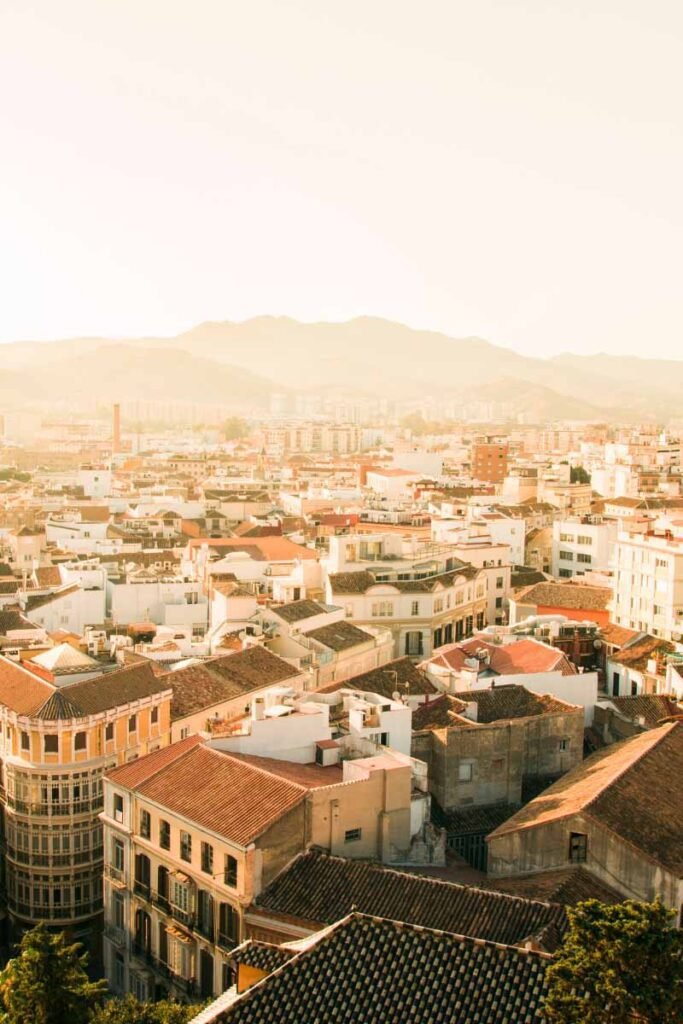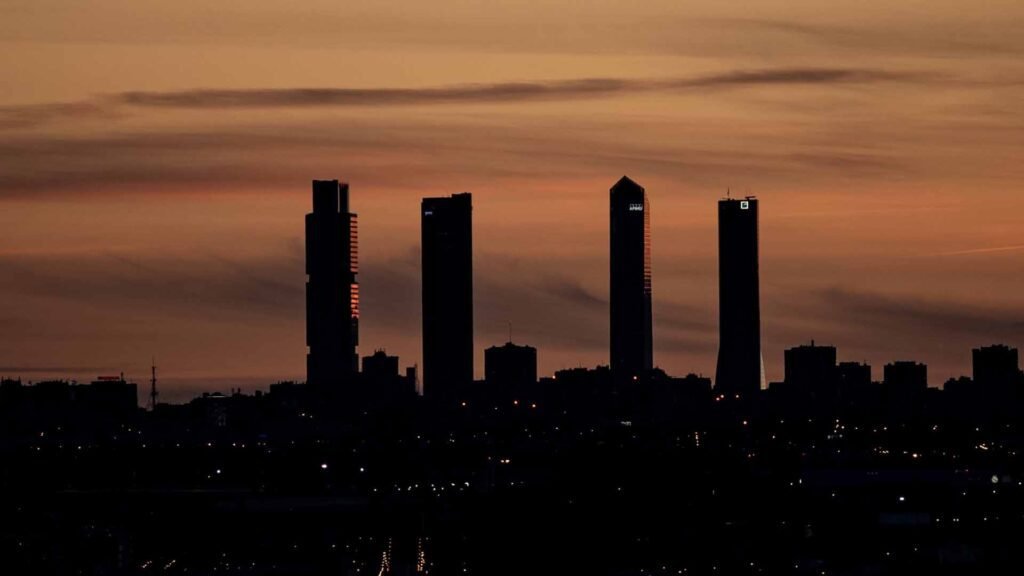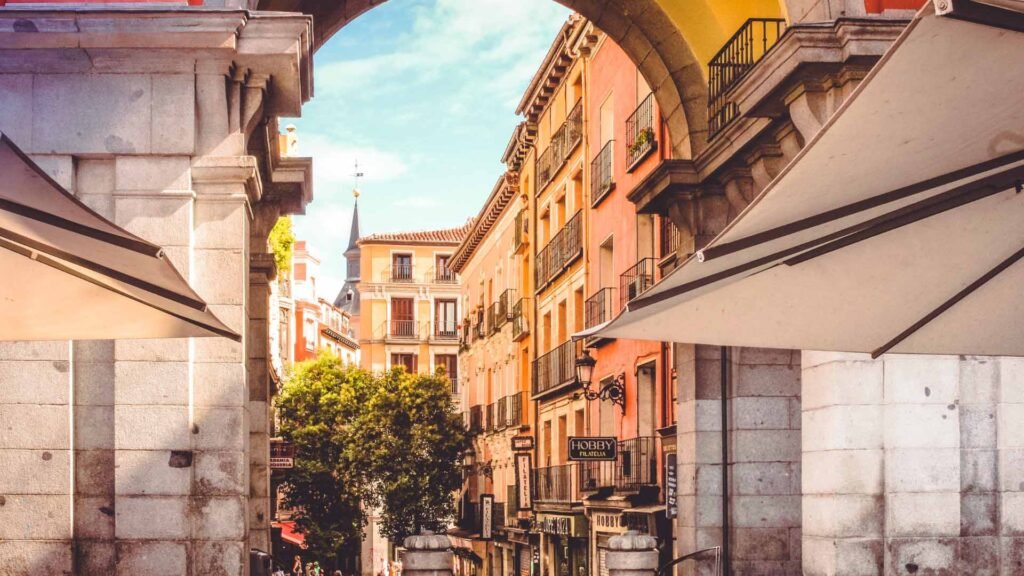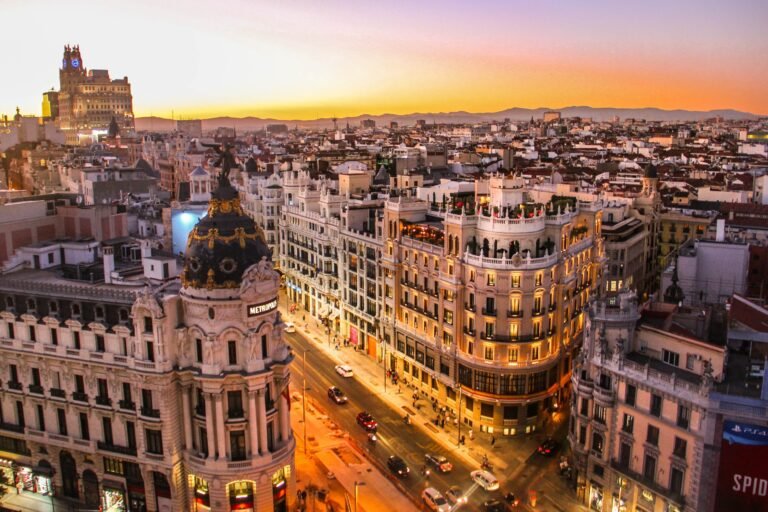Madrid, the capital city of Spain, is renowned for its lively atmosphere, rich history, and stunning yet modern architecture. This European metropolis is one of the top tourist destinations in the world, attracting millions of visitors each year with its world-famous museums, sangria-filled terraces, and joie de vivre.
There’s no denying that Madrid is a city with a rich cultural heritage and an alluring contemporary vibe, making it an ideal destination for travelers who want to combine stunning art and architecture with a lively atmosphere. But where is the city in relation to other hotspots in Spain, such as Barcelona, Valencia, and the Canary Islands? And how can you get around the Spanish capital?
Because, Madrid, in reality, is nothing special. It does not have a great river, and hardly any skyscrapers. No channels, no lakes. Neither glorious ruins, nor sea. Madrid lacks a lot of things. But it has people in the streets. The unexpected corner. The variety. The contrast. The constant animation. And its customs. It is worth getting up early, for once, to live one day of the life of Madrid.'”
MIGUEL MIHURA
Where is Madrid Located?
Madrid is located in the central part of the country, situated at an altitude of 2,120 feet above sea level. The city is located in the heart of the Iberian Peninsula and is surrounded by the Sierra de Guadarrama mountains to the north and the Sierra de Gredos mountains to the south.
Madrid’s location is easily accessible via air, land, and sea transportation, making it a popular destination for tourists and business travelers alike. Via most major airlines (or sometimes train), the city is in close proximity to other major cities such as Barcelona, Valencia, and the Spanish islands, making it an ideal location for exploring the cultural, historical, and natural wonders of Spain.
Due to its central location, Madrid offers a great climate with somewhat mild winters (compared to the rest of Europe) and dry conditions. However, the city is notorious for its hot, hot summers. Most locals head out of the city during the hottest months of July and August, and after spending a few days of summer there, you’ll understand why (always book accommodations with air conditioning or a lot of high-powered fans if visiting during the summer).
Overall, the city’s strategic location has contributed to the city’s growth and development over the past few decades. For example, Catalunya’s economy was 25% larger than Madrid’s in 1975, despite the capital city’s prominence in modern literature and on political circuits. However, Madrid has since surpassed Barcelona and is now the fifth-largest city in Europe in terms of population (as of 2023, the Madrid population is over 3.2 million).
Where is Madrid in Spain?
If you look at Madrid on a map, you’ll notice it’s located in the center of Spain, specifically in the Community of Madrid. Its location in the geographical center of the country and its elevated altitude of over 640 meters above sea level makes it a crucial transportation hub and a political and cultural center of the nation.
Madrid has been the capital of Spain since 1561, and, as we’ve just mentioned, it is currently the largest metropolitan area of the country and the fifth-largest city in Europe.
It’s worth researching the history of Madrid a bit more in-depth (we don’t have enough space here to bore you with the details), but it’s the capital city’s strategic central location that has allowed it to become an essential link connecting the various regions of Spain, contributing to its development and economic growth.
Due to its centralized location and good transportation infrastructure, Madrid has become a hub of business, finance, and tourism.
Also Read: How Far is Barcelona From Madrid?

Oh, were you still interested in the history of Madrid? Here are a few facts about Madrid to quench that culture-hungry monster inside of you.
- Madrid lies almost exactly at the geographical heart of the Iberian Peninsula. While it’s not necessarily related, you can also visit Kilometer Zero in Madrid’s Puerta de Sol (if it’s not covered by a bombardment of tourists, that is). The marker is the point from which distances are measured in Spain
- Madrid was chosen as the capital of Spain due to its neutrality. King Philip III designated Madrid as Spain’s capital in 1561 not because of any strategic, geographic, or economic advantages but due to its obscurity and neutrality. The city lacked ties with established nonroyal powers, making it the perfect choice as a neutral ground.
- Madrid is one of the highest capital cities in Europe. Madrid’s elevation is 646 meters above sea level (or just over 2,100 feet). This makes Madrid one of the highest capital cities in Europe (Andorra La Vella is the highest).
In general, Spain is home to some of the highest cities in Europe, making it a top destination for outdoor adventures and sweeping views.
Transportation in Madrid
Madrid has a well-connected and efficient public transportation system with a range of options for tourists and locals alike.
The Madrid Metro is the most commonly used mode of transport, with 13 lines, including the Ramal Ópera-Príncipe Pío, which is a short line, and over 300 stations connecting the city’s major attractions.
Additionally, there is a light rail system with four lines (Madrid, Pozuelo de Alarcón, Boadilla del Monte, and Parla) and more than 50 stations in total. There is also a suburban train network that connects the city center to the suburbs.
The bus system in Madrid is also reliable, cost-effective, and extensive, with over 200 different lines and a fleet of 2,000 buses, offering a cheap alternative to the metro.
Not a fan of shared public transportation? Madrid taxis are another perfect means of transportation if you have a bigger budget. They are easily identifiable by their white color with a red diagonal line. However, ridesharing apps like Uber, Bolt, and more are widely available in the city, too.
Similarly, visitors can purchase a Tourist Travel Pass for unlimited use of public transportation during their stay. This is a great option if you think you’ll be using the metro a lot. Honestly, because Madrid’s metro and bus systems are so well-connected, we recommend you do.
Tips for Using Public Transportation in Madrid:
- The Adolfo Suárez Madrid-Barajas Airport is extremely well-connected via the metro. We always took the metro back to our apartment when we lived in Madrid. However, remember there is an additional surcharge of €3 when entering or exiting the Barajas airport metro stop.
- If you plan on buying a Multi Public Transport Card to use during your stay, the card costs €2.50 plus whatever you choose to load it with.
- Download the Madrid Metro app. It will help you plan your journeys effectively and see if there are any delays or better routes to take.
- Even if you’re not going to take a train in or out of Madrid, we suggest visiting the Atocha station. The inside looks like a tropical forest, and it’s one of the most Instagrammable spots in the city.
Madrid’s Economy

Geography matters, sure. But Madrid is one of the most important economic centers in Spain. This city is home to many multinational corporations, including Banco Santander and Telefonica, and it has a highly developed financial sector, with the Madrid Stock Exchange being one of the largest in Europe.
Madrid also has a thriving tourism industry, with millions of travelers visiting the capital city annually. Ultimately, Madrid is a hub for international trade and also has an economy that is heavily reliant on the service sector, which includes industries such as transport, communication, and financial services, which together contribute to more than half of the city’s total value added.
Madrid’s Architecture

Madrid is a city of historical and modern architecture. The combination of classic and contemporary buildings gives the city its unique character.
For example, while it might not look like much now, one of the greatest icons of organic architecture in Spain is the Torres Blancas. It was built by Francisco Javier Sáenz de Oiza, one of the most innovative concrete structures of its time, and starkly contrasts the more classic architecture you might find when wandering through a neighborhood like Malasaña.
Other architectural landmarks worth seeing include Plaza de Cibeles, which was built in 1782 and is well-known for being the celebration spot of the Real Madrid football team. The city also has a number of museums and galleries dedicated to architecture and design. These include the Museum of Romanticism and the Cerralbo Museum.
It’s also worth checking out the CaixaForum Madrid, a contemporary cultural center, and the Telefónica Building, an emblematic skyscraper that was once the tallest building in Europe (and the “star” of Netflix’s Cable Girls). On the other hand, if you’re interested in historical architecture, the Plaza Mayor is a must, as it is surrounded by ornate Baroque buildings.
Other notable sites with architectural aspects of the Renaissance, Baroque, Neoclassical Style, and contemporary design include the Royal Palace of Madrid and the Almudena Cathedral. In general, Madrid is a must-visit destination for those interested in architecture in general. It’s, as Don Ernesto (Hemingway) put it, “the most Spanish of all cities.”
Madrid’s Climate
Madrid’s climate is characterized by hot summers and relatively cold winters, with dry weather throughout the year.
According to the Köppen climate classification system, Madrid falls under the Mediterranean climate category. The summer months of June, July, and August experience high temperatures with an average high of 86°F (30°C), while the winter months of December, January, and February see an average low of 36°F (2°C).
Rainfall is scarce throughout the year, with the majority of precipitation occurring in the autumn and spring months. The dry climate, combined with its location at an altitude of over 640 meters above sea level, makes Madrid one of the sunniest cities in Western Europe.
Places to See in Madrid
Madrid is a cosmopolitan and culturally rich city with countless attractions and landmarks worth visiting. When planning a trip to Madrid, it’s important to know which places are essential to include on your itinerary. Here are some of the must-see places in Madrid:
- The Prado Museum: This world-renowned museum is home to an extensive collection of European art featuring works by Spanish masters like Velazquez and Goya. From Monday to Saturday, the Prado Museum is FREE between 6 to 8 pm, and on Sunday, it’s free from 5 to 7 pm. Just get there early (about 15-45 minutes early, depending on the season) to get in line.
- The Royal Palace: This grand palace is the official residence of the Spanish royal family and boasts stunning architecture, art, and history. It’s right next to the Templo de Debod, which is one of the best spots to catch a sunset in Madrid.
- Retiro Park: Madrid’s largest and most popular park. It is a peaceful oasis in the middle of the city with beautiful gardens, fountains, and lakes. While you can jog, stroll, or sit and people-watch, we suggest heading straight to the inner lake to enjoy a quick rowboat ride.
- Puerta del Sol: This bustling square is the heart of Madrid and is home to the famous clock tower, as well as numerous restaurants, shops, and street performers. Visit Puerta del Sol to snap photos of the iconic Tio Pepe building, the El Oso y el Madroño statue, and (usually) at least one person dressed as Elmo.
- Plaza Mayor: Commissioned by King Philip II in 1577, this historic square is surrounded by beautiful arcades and is a popular spot for outdoor markets and festivals. If you visit Madrid during Christmastime, it’s definitely worth adding to your itinerary.
- Gran Via: Known as Madrid’s “Broadway,” Gran Via is a bustling street lined with theaters, shops, restaurants, and nightlife. It’s also where you’ll find the Círculo de Bellas Artes, which is home to one of our favorite rooftop bars and terraces in Madrid.
These are just a few of the most important places to see in Madrid. Be sure to also check out other popular attractions, such as the Reina Sofia Museum, the San Miguel Market, the Madrid Rio, and the Almudena Cathedral. Just be sure to leave some time to enjoy sangria on a sunny terrace.
Frequently Asked Questions About Madrid
What is the capital of Spain?
Madrid is the capital of Spain.
What country is Madrid located in?
Madrid is located in Spain, in the southwestern part of Europe on the Iberian Peninsula.
Is Madrid a country in Europe?
Madrid is not a country. It is the capital city of Spain, which is a country within the European continent, the European Union, and the Schengen Zone.
Why is Madrid famous?
Madrid is a city famous for its diverse culture, delicious cuisine, and rich history. Home to world-famous art museums, such as the Prado and Reina Sofia, the city also features breathtaking architecture and lively neighborhoods like Gran Via and La Latina. Madrid is also known for its bustling street life, parks, and nightlife.
Why is Madrid so special?
Madrid is a city that never fails to impress. One of the reasons it’s so special is because of its rich culture and history, which can be seen in its many museums, palaces, and historic landmarks.
Another reason is the lively atmosphere, with bustling streets filled with people enjoying amazing food and drinks. Madrid is also a benchmark for its world-class art scene, as well as for its great activity at night.
Is Madrid a Spanish-speaking city?
Yes, Spanish is the official and most widely spoken language in the city. The majority of the population in Madrid speaks Spanish as their native language.
What continent is Madrid in?
Madrid is located on the European continent.


